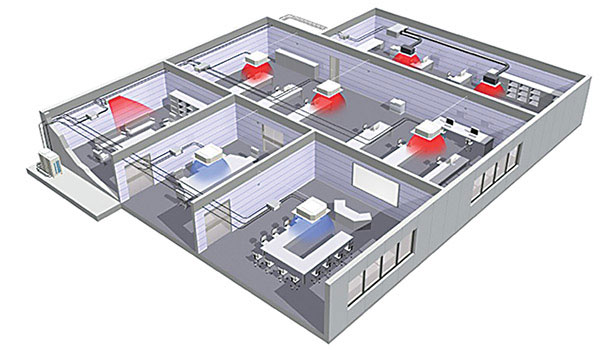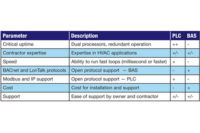One of the most interesting new HVAC trends is the use of VRF systems. While the use of these systems is fairly new in North America, they have been deployed in other parts of the world for years. In fact, in Asia, where the concept was developed, they have been widely used for decades.
The concept of a VRF system is an extension of the ductless mini-split, where you have a packaged condensing unit connected to an indoor fan unit, which is mounted on the wall or in the ceiling grid. In a VRF system, the same ductless indoor units are used but a single outdoor condensing unit serves a group of them. The system can be configured to provide cooling or heating (heat pump) at any unit, as well as heat recovery. The outdoor units typically have one or more variable speed compressors and the ability to match the loads of the interior units. System suppliers are starting to offer more and more options with VRF, including a variety of indoor units and outdoor units that are either air or water-cooled.
As you can imagine, there is a lot of technology required to make a VRF system operate, including tightly integrated controls. The suppliers generally sell this as a complete system that includes the indoor and outdoor units as well as all of the required controls. When specifying a system, you can select various options for indoor unit controllers (wired or wireless) as well as a central coordination panel. The control sequences for the system are largely pre-programmed by the manufacturer. While this may seem limiting, we have observed remarkable efficiency from these systems, due in large part to the close integration of the controls.
There are options, however, to integrate a VRF system into a BAS. Most suppliers offer an optional controls gateway that will communicate using standard protocols such as BACnet and LonTalk. The gateways provide the ability to monitor the system and to do basic control such as changing space setpoints, schedules, viewing faults, etc.
On most U.S. projects, the use of a VRF system will require careful attention to how ventilation air is introduced and managed. This may mean the use of a DOAS. Overall controls design should focus not just on the integration of the VRF system but also on coordination with the DOAS, and on the control of other building systems including exhaust fans, lighting, and other ancillary loads.
Properly designed VRF systems offer many benefits including high performance, improved comfort, and a robust controls solution. Still, careful attention needs to be placed as to how these systems will either operate as a standalone system or (ideally) as part of an integrated building automation system.





